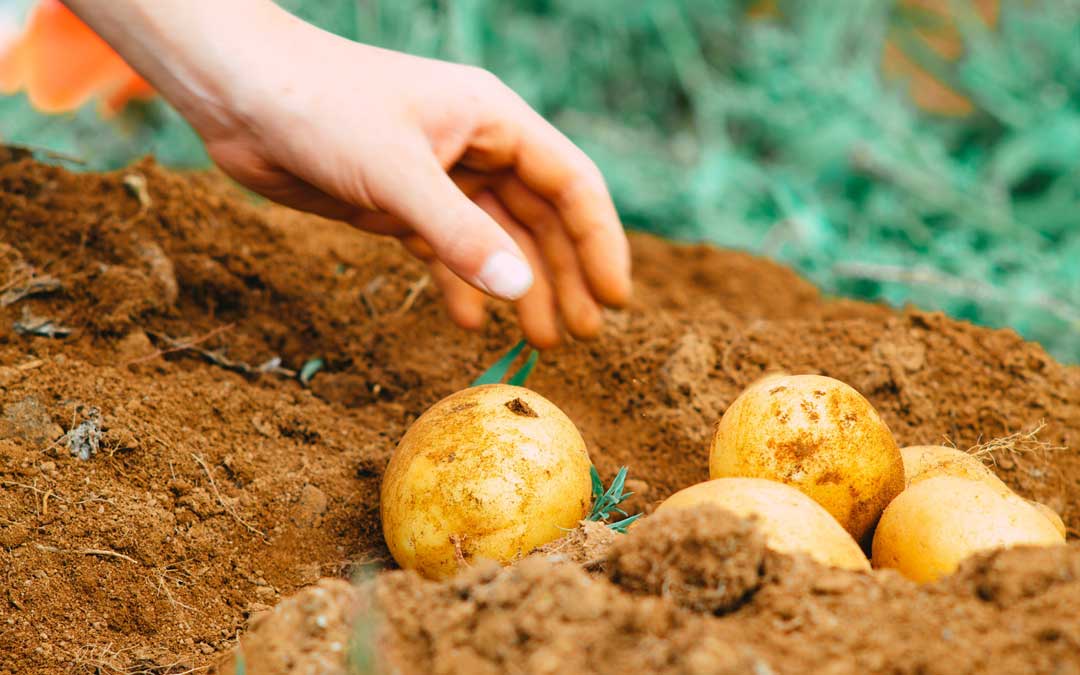How to resolve the complexity of crop rotation!

Whenever I plan my next season vegie garden I’m faced with the tricky question of how to rotate my crops. It may sound simple – just grow something different in each plot each season – but in reality there are a lot of factors to take into account which do not resolve easily.
Crop rotation is a system of planting a different crop in a different bed each year, in an ordered sequence, that best utilises the soil inputs and outputs of each vegetable family for the health of all.
The purposes of crop rotation includes the following:
- To maintain healthy soil structure by increasing biomass in the soil. Biomass consists of roots, spent plant material and dug-in green manure crops – that is, organic matter
- To increase nutrient levels in the soil particularly nitrogen and appropriately feed each crop
- To prevent soil-borne diseases such as root-knot nematode
- To control insects and weeds and prevent specific weeds and pests associated with specific crops taking a hold
- To increase biodiversity to attract beneficial insects and increase micro-organisms in the soil
- To sequester carbon in the soil
- To avoid having to use chemicals and non-organic fertilisers
In other words, crop rotation results in resilience!
In designing the next season’s rotation, the following can be problematic:
- Previous season’s crops are not yet finished in a bed you need to plant for the following season
- Plants from the one family may have summer and winter varieties that cannot be planted in the same bed eg. Solanaceae family has summer croppers such as tomato, capsicum, eggplant and winter croppers such as potato
- Space available, number of beds available
- Plants that don’t fit into usual rotations eg corn, potatoes and pumpkin
- The need to leave a bed or beds fallow though there is now some evidence that this is detrimental to soil health and it is better to plant a green manure crop – a combination of legumes and grasses
- Sunlight requirements of crops eg capsicums need the hottest part of the garden, eggplants the second hottest, leafy greens more shaded areas
- Bad companions which should not be planted together eg parsnip and carrot, pumpkin and potato
A crop rotation system can have any number of beds but the most common are the 4 and 6 bed systems. Knowing the family names of crops is very useful, if not essential, as these form the basis of rotation.
The 4 bed system consists of:
- Group 1 Brassicaceae (broccoli, cabbage, cauliflower, Brussel sprouts, kale, turnip, swede, kohlrabi, Asian greens, mizuna, and radish) and Compositae (lettuce)
- Group 2 Amaranthaceae (beetroot, spinach and chard ) and Umbelliferae (carrot, parsnip, celeriac, celery, fennel, dill and parsley)
- Group 3 Solanaceae family (tomato, capsicum, chilli, eggplant, potato) and Cucurbitaceae (pumpkin, squash, cucumber and zucchini)
- Group 4 Leguminosae (peas, beans, broadbeans) and Alliaceae (onions, shallots, spring onions, leeks, garlic, chives)
This leaves 2 families not accounted for:
the Poacea or Grass family (corn and maize) which is important to plant alternatively to legumes to provide biomass and the rest of the Compositae family (chicory, endive, salsify and Jerusalem artichoke) though this could potentially be planted in Group 1.
With a 4 bed system it is wise to leave out some vegetables or even several families each year. The sheer size of the groups would generally mean planting 2 or 3 beds to grow even a minimum from those families.
The 6 bed system is my favourite and one I adopted from Peter Cundall decades ago.
- Bed 1 contains tomato, capsicum, chilli and eggplant (Solanaceae family). These love acidic soil.
- Bed 2 Onion family (Alliaceae). As these follow tomato family, add lime or dolomite to the soil a month before planting.
- Bed 3 Peas and beans (Leguminosae). These add nitrogen to the soil.
- Bed 4 Cabbage family (Brassicaceae). These need a lot of nitrogen.
- Bed 5 Root crops, spinach, chard, celery, some herbs (Amaranthaceae and (Umbelliferae)
- Bed 6 Corn, cucumber, pumpkin, squash and zucchini (Cucurbitaceae)
And then back to bed 1. Each crop only grows in the same bed every 6 years.
Growing a green manure crop especially after a legume crop is good practice. You may find you have a spare bed after summer cropping for this, one that might otherwise lay fallow till spring.
Rotating crops avoids all the pitfalls of monoculture which we see in large scale commercial farming including development of competitive weeds, pests, loss of nutrients and biomass, and subsequent potential wind and water erosion.
Crop rotation in the home garden requires us to be thinkers and planners. We need to know that grasses produce high biomass and legumes low biomass, that legumes add nitrogen to the soil and cabbage family chew it up, that pH must be adjusted sometimes with high (alkaline) pH, for example, causing potato scab and being unsuitable for the tomato family, that hours of sunlight must be planned for (full sun/partial sun/ partial shade), and that best of all we can grow organically with confidence.
Written by Robin Gale-Baker
